About Kora Company
Kora’s roots began with Kora EC, which was founded in the Toulouse region of France in 1990 by a small group of electronics engineers. The Toulouse region is home to France’s renowned aerospace and electronics industry. Initially, the company manufactured power supplies and signal processing, but due to the company’s engineers’ love of music, it soon changed direction to produce tube amplifiers.
In 2017, the company was acquired by Bruno Vander Elst and rebranded as Kora High Fidelity. The company continues to proudly design and manufacture its products in France. The company’s product line includes Class A power amplifiers, Class A/B power amplifiers and integrated amplifiers, a preamplifier, a CD player, a phono preamplifier and the converter reviewed here.
All of the company’s devices use a circuit developed by them and protected by a patent, the circuit is called Square Tube. This is a complex technology that will not go into detail here, you are invited to read about this technology on the official Kora website . In short, this is an innovative way to combine tubes and transistors, most often such combinations are made in a hybrid configuration in which the preamplifier stage is tube-based while the power amplification stage is transistor-based. In contrast, in Square Tube technology, the tubes are responsible for the amplification and produce the sound character, while the transistors “help” them and provide the ability to drive any type of speaker, without damaging the tube sound character, so according to the company, it is a full tube amplifier with transistors assisting it.
The one under test: Kora DAC 140
The Kora DAC 140 is the only converter in Kora’s current product line. The operation of the DAC 140 can be divided into four stages. In the first stage, the AK4118 chip from AKM is used – in this stage, the signal is received from one of the device’s inputs and converted to a 32-bit I2S signal. In the second stage, the signal undergoes an oversampling process to a 768kHz signal, this stage is performed using the AK4137 chip. This process ensures that the filter performed in the conversion stage is done at frequencies much higher than the audio range frequencies and therefore does not introduce distortions in the conversion process to this range. The third stage is the conversion process, which is performed on a 32-bit 768kHz signal using an integrated circuit from ROHM. The fourth and final stage is the output circuit stage.
Like all of the company’s products, the DAC 140 uses Square Tube technology in its analog output circuit, which according to the company ensures smooth and accurate musicality.
On the inputs and outputs side, the Kora DAC 140 offers a wide and particularly generous range of inputs with 4 coaxial inputs, 2 optical inputs, 2 AES/EBU inputs and a USB-B input for computer connection. On the outputs side, there is one balanced XLR output and one unbalanced RCA output.

The input signal supported by the USB input is up to 384kHz and all other inputs up to 192kHz 24bit, meaning there is no DSD support here.
The dimensions of the device in mm are: 100 height, 420 width and 340 depth and the weight is 6 kg.
Design and build quality
Kora has its own design language that it takes care to maintain with zeal and precision in all its devices, and in my opinion, this is already worthy of appreciation. The company’s boxes combine aluminum and steel and their finish is called Mineral Grey. The front panel is divided into two, at the bottom there is a metallic gray stripe and the top has a glossy black finish in which the screen is also embedded. I really liked the integration of the screen. It gives a modern and clean look and does not separate the screen from the rest of the box.
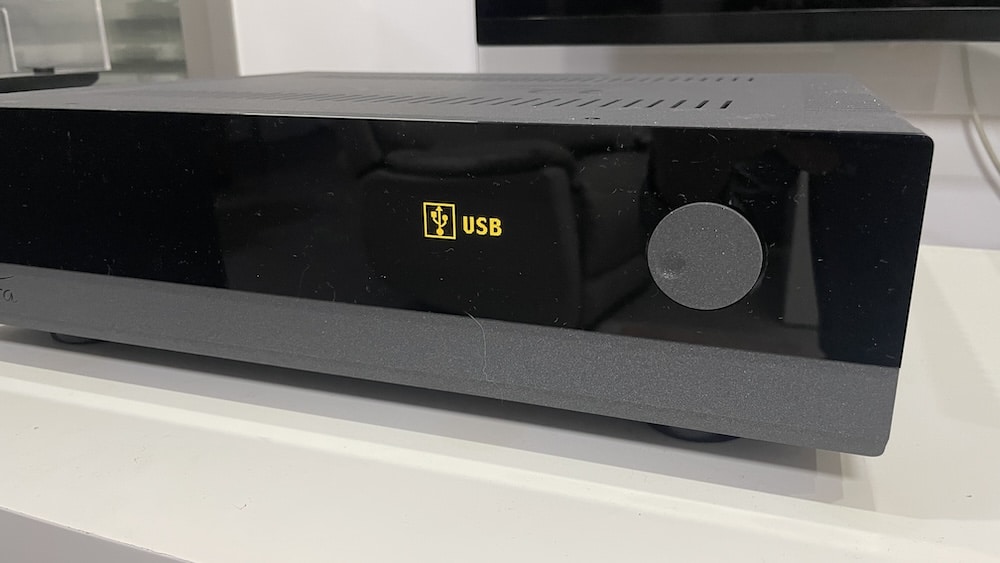
The screen features a sharp, legible orange font, and it displays the input name, the input type icon, and when playing, also the data of the input signal.
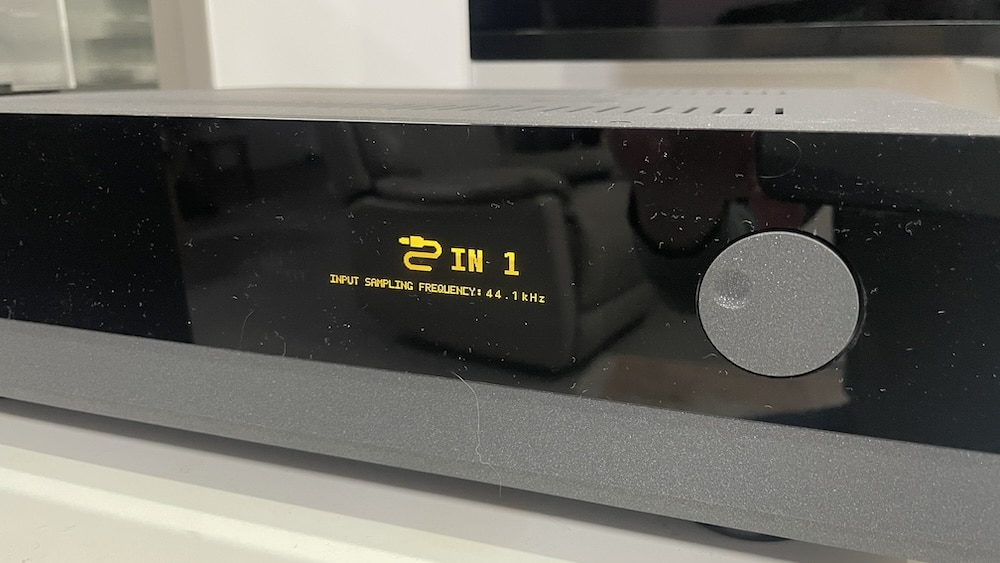
What further contributes to the clean and minimalist design is the use of a multi-colored switch with a button on it as the sole means of control for all of the device’s functionality.
When the device is in standby mode, there is a red light that lights up in the center of the front panel.
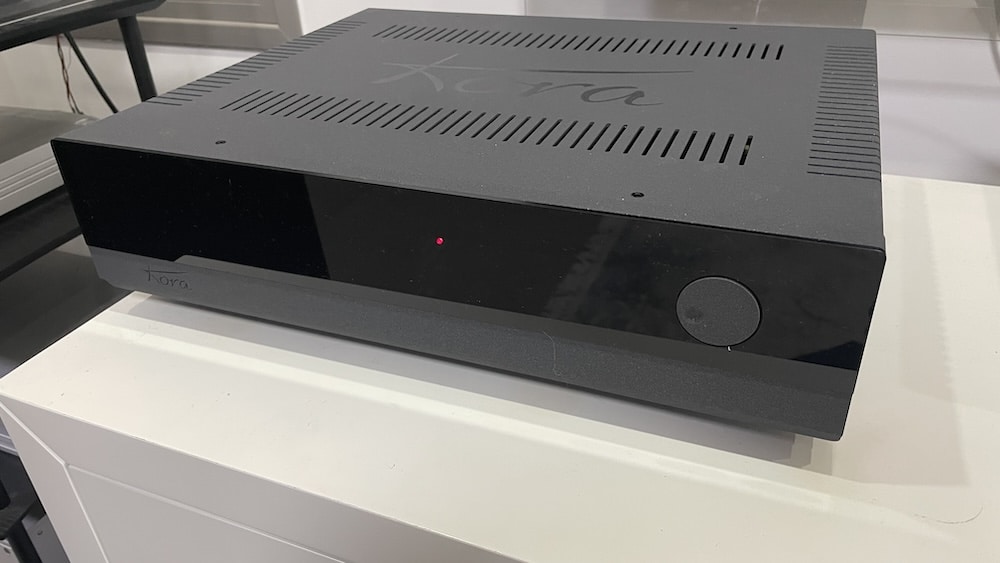
The top panel has a dark gray finish and is also embossed with the Kora logo, which also appears in the lower left corner on the front panel. Overall, the design is modern, clean, and pleasant.
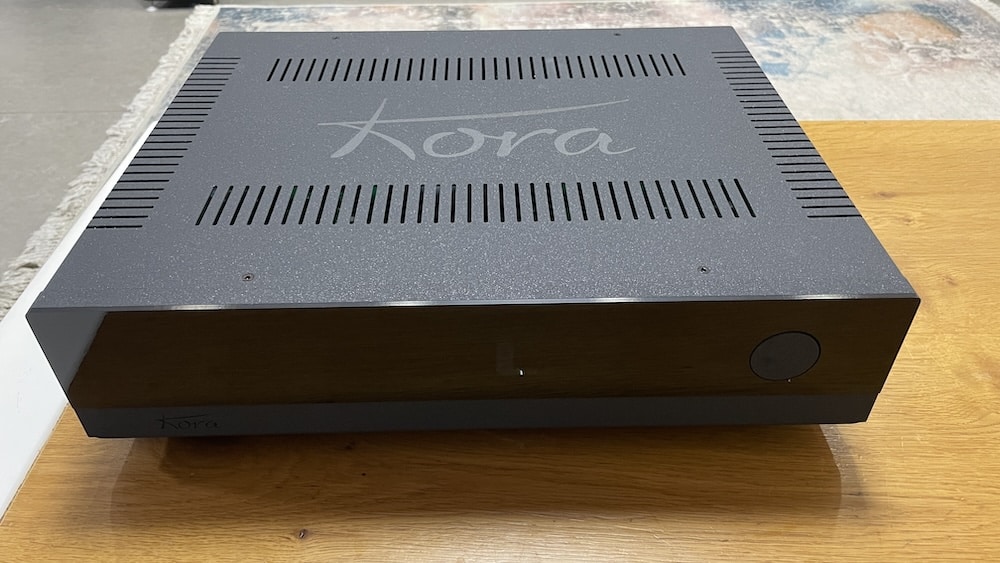
The build quality is excellent. The box is smooth to the touch, the switch is very sturdy, all inputs and outputs are gold-plated, and the device also comes with stable, high-quality feet.
Usability
As I mentioned in the design section, the device is controlled from its front panel entirely using the multi-function switch. Turning it on is done by pressing the switch, while turning it off is done by holding it down. After turning it on, as with any lamp-based product, there is a waiting process for the lamps to warm up to their optimal operating state. The screen provides an indication of the process.
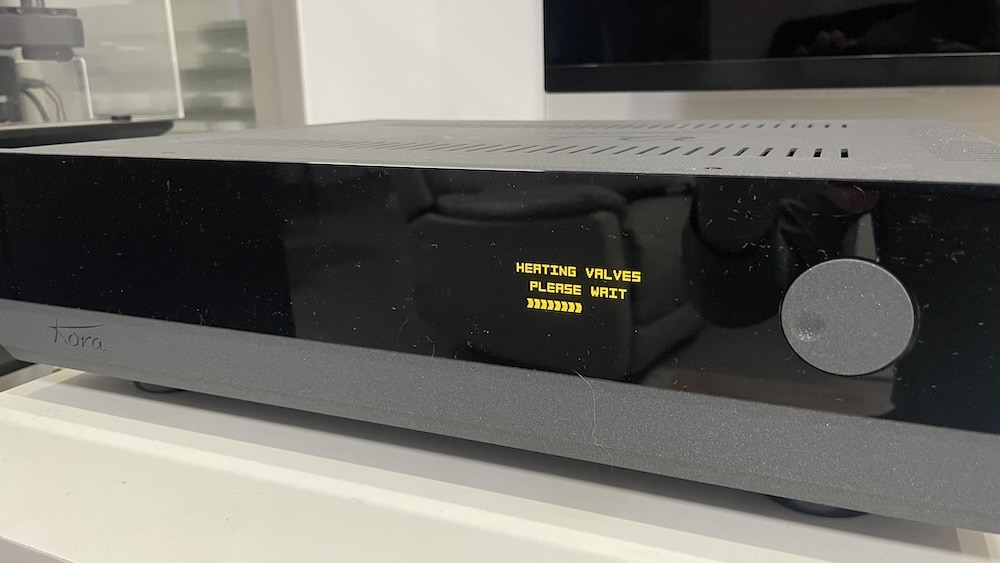
Once the device is powered on and ready to go, the screen displays the active input. Less intuitively, at this point, turning the switch does essentially nothing. I would expect the switch to be used to switch between inputs, but to put it in this state you first have to press it and then you can enter the menu, or switch inputs.
The menu includes very general options such as screen brightness and the volume of the sound that pressing the switch produces.
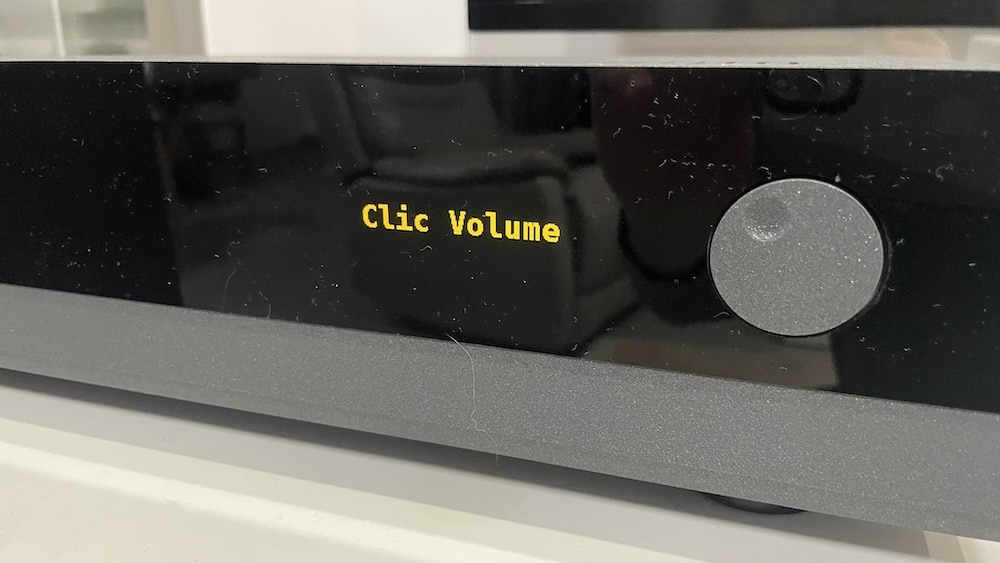

On a device with a large number of inputs like the Kora DAC 140, it would have been nice to see the ability to name the inputs and even more so to turn off irrelevant inputs, so that there would be no need to scroll through inputs that are not connected to any device at all. I do want to positively note the very clear use of icons for each input (coaxial/XLR etc.), without them it would have been much harder to navigate between the inputs.
The device also comes with a remote control, designed to control a number of the company’s devices, including their CD player. The remote features the gray mineral finish that matches the device and allows switching between inputs using the DAC Input button.
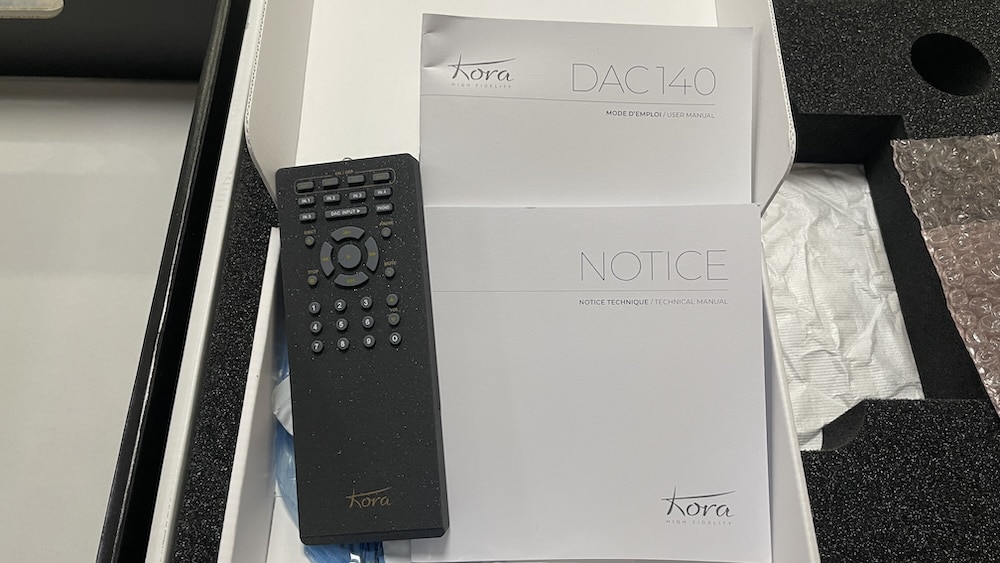
To summarize the usability part, the screen is functional and readable, however, the multi-function switch is a little less intuitive, but after using it once or twice you can get used to it.
Listening test
For the listening test, I connected the Kora DAC 140 to my integrated amplifier, the Nagra Classic Int. The speakers were the YG Acoustics Carmel 2 and the sources were the Nagra Streamer and an Ayre CX-8 CD player. As usual, the full system details are at the end of the article.
I first connected the converter to the amplifier using the XLR connector, but after a first listen, I immediately recognized that there was a voltage incompatibility between the devices. The Nagra Classic Int’s XLR input has two modes: Normal and Pro. In Normal mode, the input expects to receive voltages of no more than 2V. Based on the sound I received, I’m sure the Kora outputs a higher voltage. Since switching to Pro mode is very inaccessible to me where the amplifier is placed, I simply switched to using RCA. The Kora’s specifications do not indicate the output voltage, I will only add that a voltage of 2V is lower than usual, so there will most likely be no problem connecting to other amplifiers using the XLR.
Part 1: Playing from a streamer with a coaxial connection
After a quick run-through and a little non-binding listening, I sat down to listen to the Kora DAC 140. The first album I chose was the jazz album Poems for Travelers by the Emil Brandqvist Trio. I first listened at a low volume and even at that volume you can feel the three-dimensional stage that the DAC 140 produces. The sound profile is clean with good instrument separation. One feature I noticed is that the sounds linger a little longer than usual, what is known as decay, is a phenomenon that is often associated with tube equipment and it adds a feeling of softness and naturalness. The piano sounds airy and rings in a rich and pleasant way. The bass has a little extra warmth. Overall, the jazz presentation is wonderful. If you turn the volume up to a higher level, the stage gets even bigger, and it is even easier to notice the high level of cleanliness of the sound.
From jazz I moved on to the blues and to Maria Daines’ Heartshaped Blues from her album Your Time Will Come . The electric guitar here receives a pleasant warmth, the vocals are separated and centered, the stage is three-dimensional and large, the presentation is natural and slightly softened.
The next piece I chose is a live performance of folk pop, the piece is called The Way by Sarah Blasko from the live version of the album I Just Need To Conquer This Mountain . This is a slightly flat recording, and it was impressive to see how the Kora DAC 140 manages to add some volume to it, the vocals are delivered cleanly, separated, with good micro dynamics and brought a little further forward, the piano has a natural, soft and pleasant tone.
I moved on to a more energetic rock ballad, Hey Poseidon by Heather Nova, the opening track of the album Breath and Air. The bass here is punchy and has a delightful warmth, despite that warmth the level of detail is high. The balance between the bass, guitar and vocals is excellent. The high parts of Heather’s voice are softly conveyed and are slightly rounded, so the presentation includes a good combination of the dynamics of rock music with natural vocal delivery and warm bass.
For the last section in this section, I chose a piece that combines electronic music, Hollow by the band Kaleida from the album In Arms . Here I had expectations of discovering a weak point in the Kora DAC 140, this is due to the fact that a warm character comes at the expense of the tightness and neutrality that are usually important in electronic music. So there is a little softening here, but alongside good dynamics, a high level of detail, separated and centered vocals, the result is precise and pleasant, so it also copes very well with the electronic genre.
Part 2: Comparison vs. MSB Discrete DAC
In this section, we will compare the Kora DAC 140 and the MSB Discrete DAC with two external power supplies. Before we talk about the differences in sound, we will briefly note the differences in features. The Kora DAC 140 includes a much more generous amount of inputs, and on the output side there is also a choice between XLR and RCA. In contrast, the MSB has fewer inputs and only an XLR output. On the other hand, the MSB includes a modular design that allows for future upgrades (for example, a new i2s connection module was recently released). There is also a module with a network input, which turns the MSB into a streamer. Additional features of the MSB include a volume selector, so the Discrete can also be used as a preamplifier, and finally, the MSB also supports the DSD format.
So now that we understand the differences in features, what are the differences in sound? For this examination, I went back to two pieces from the previous section. First, the blues piece Heartshaped Blues by Maria Daines. In my opinion, compared to the MSB, the Kora DAC 140 has a warmer sound profile, the sound is more forward, the guitar is more present, it is warmer and more powerful. Another difference that stems from the different nature of the instruments is in the separation between the vocal and the guitar, which is slightly better in the MSB thanks to its more neutral nature.
In the electronic piece “Hollow” by Kaleida, I also thought of similar differences in the sound character. The level of detail was overall very similar, but it was easier to sense the different layers through the MSB, while the Kora’s presentation felt smoother and more front-stage to me.
To summarize this section, these are two excellent converters and the choice between them will depend on the features you are looking for, and whether you prefer a neutral, calm, and precise character like the MSB, or a warm and perhaps more western character, like the Kora.
Part 3: Playing from a CD over an AES/EBU connection
In the third part of the test, I connected my CD player, the Ayre CX-8, via the AES/EBU connection using the Shunyata Research Alpha V2 cable to the Kora DAC 140 converter and was impressed by two albums on CD. First, I chose Avishai Cohen’s 1970 album. In Song Of Hope, which opens the album, I got an airy sound, with good separation between the layers, along with a smooth transition with a slight warmth in the low frequencies and a three-dimensional stage. In the piece Emptiness, there is great detail reproduction, the thumping bass is punchy, the vocals are full of emotion and the piano is full, meaty and natural.
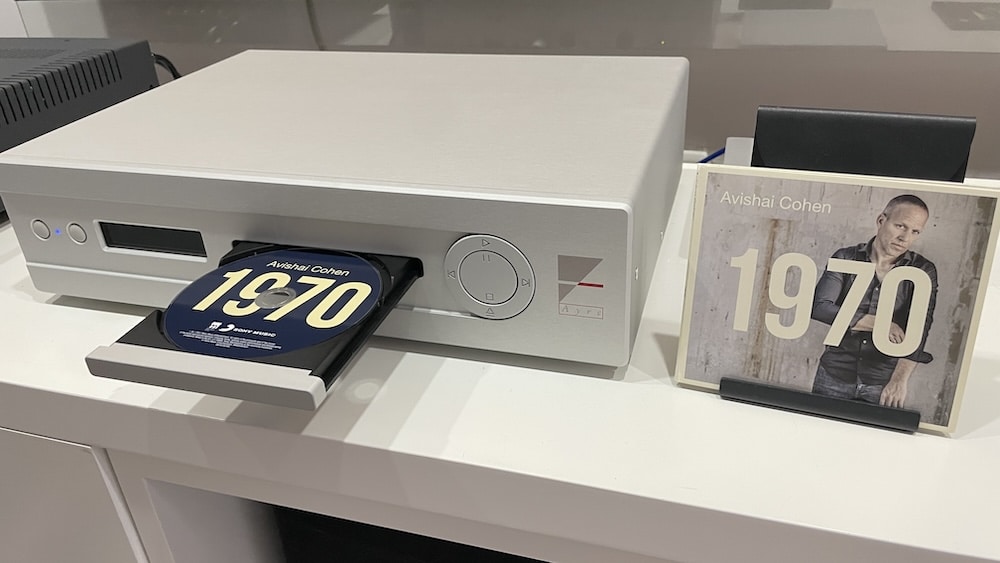
The second album I listened to was Ensoulment by London rock band The The. Matt Johnson’s deep vocals are delivered here with excellent detail, and the slightly forward delivery of the vocals only emphasizes their uniqueness. There is again a pleasant warmth to the bass and in general the slightly dark atmosphere of this album and specifically the piece Some Days I Drink My Coffee by the Grave of William Blake is conveyed convincingly and movingly through the Kora DAC 140.
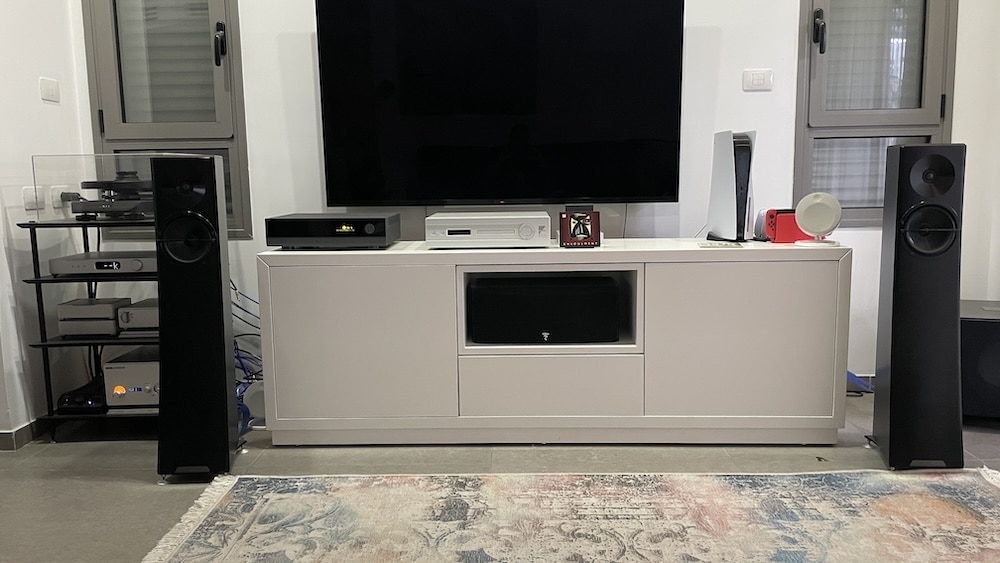
Summary
The Kora DAC 140 is the first product we’re reviewing from the French boutique company. I was impressed by the design line that is zealously maintained across all of the company’s products, and I especially liked the orange-fonted screen that is embedded into the front panel in a modern and clean way.
The Kora DAC 140 has a particularly generous selection of inputs, so you can easily connect all your digital sources to it. What about the sound signature? The DAC 140 has warm bass, vocals that are brought further forward to the listener and a large, three-dimensional soundstage. It’s a pleasant and engaging sound signature, one that makes you want to listen to more and more music.
Price : €9,500 (Euro)
Warranty : 5 years
Importer : Levinson Audio
The system I used for the review:
Speakers : YG Acoustics Carmel 2
Integrated amplifier : Nagra Classic Int
Converter for comparison : MSB Technology Discrete DAC with two external power supplies
Streamer : Nagra Streamer
CD player Discs : Ayre CX-8
Cables :
RCA cable for connecting the converter to the amplifier: QED
XLR cable between the converter (MSB) and the amplifier: Nordost Blue Heaven
AES/EBU cable for connecting the CD player to the converter: Shunyata Research Alpha V2
Coaxial cable between the streamer and the converter: Nordost Blue Heaven
Speaker cables : Nordost Blue Heaven
Power:
Power cables for the amplifier, streamer and MSB Converter: Nordost Blue Heaven
Power splitter : QBASE QB8 Mark II (to which the amplifier, MSB, CF player and streamer were connected)
Power cable for the splitter: Nordost Red Dawn